Abstract
Trifolium hybridum (alsike clover) has been implicated as the cause of two diseases of the horse. One of these is photosensitivity, of which alsike clover is only one of a number of presumed causal agents. The other is a fatal syndrome which is known as “alsike clover poisoning” and which is manifest by progressive loss of condition, signs of hepatic failure, and varying degrees of neurological impairment. The underlying lesion of alsike clover poisoning is fibrosis and proliferation of the biliary tree. The experimental evidence implicating alsike clover as the cause of this syndrome comes entirely from a series of feeding trials performed by Dr. Frank Schofield between 1928 and 1933.
This review surveys the literature on the association of alsike clover with both photosensitivity and biliary fibrosis in horses, and summarizes the clinical and pathological features of “alsike clover poisoning”. The experimental evidence that has been used to implicate Trifolium hybridum as the cause of alsike clover poisoning is critically examined. It is concluded that the existing experimental evidence is insufficient to prove that Trifolium hybridum is the cause of alsike clover poisoning.
Full text
PDF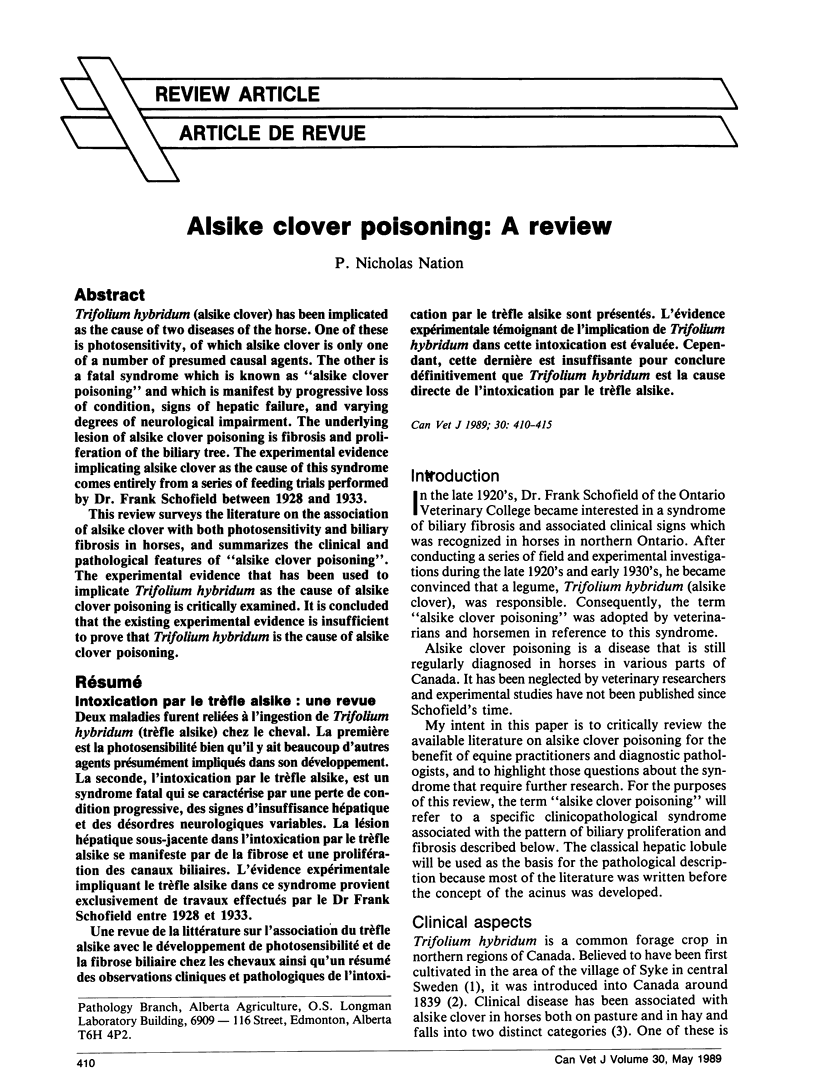
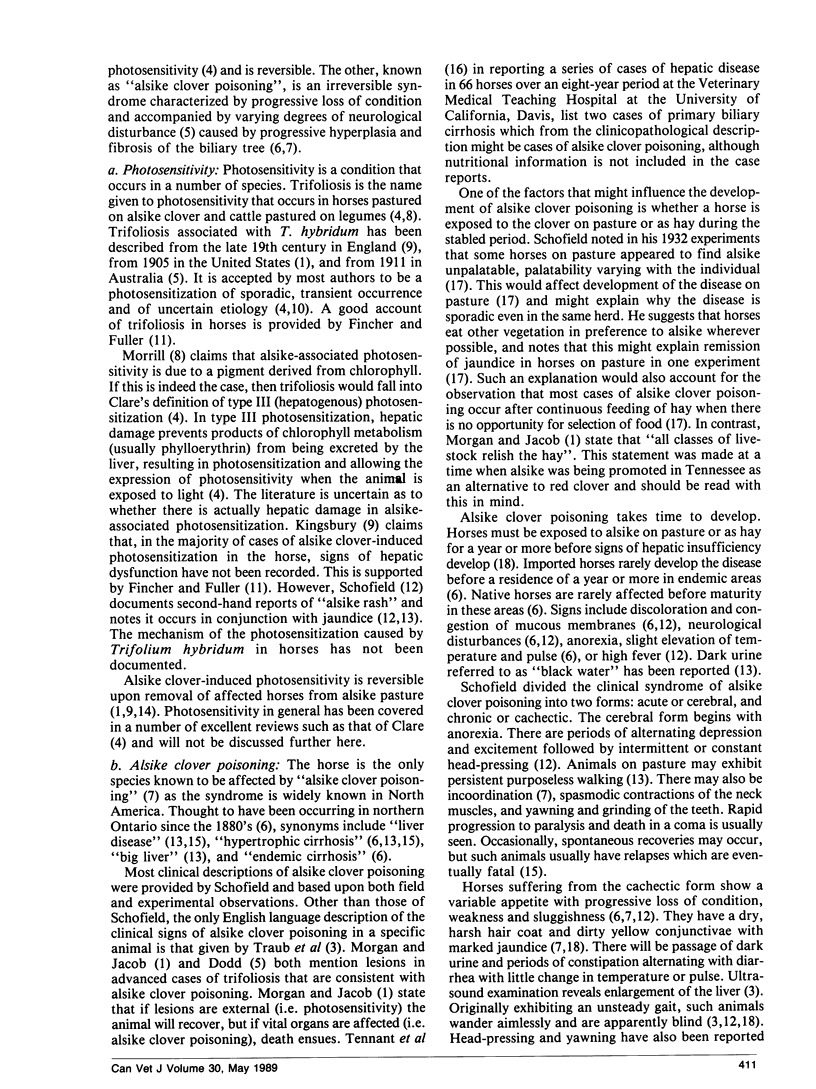
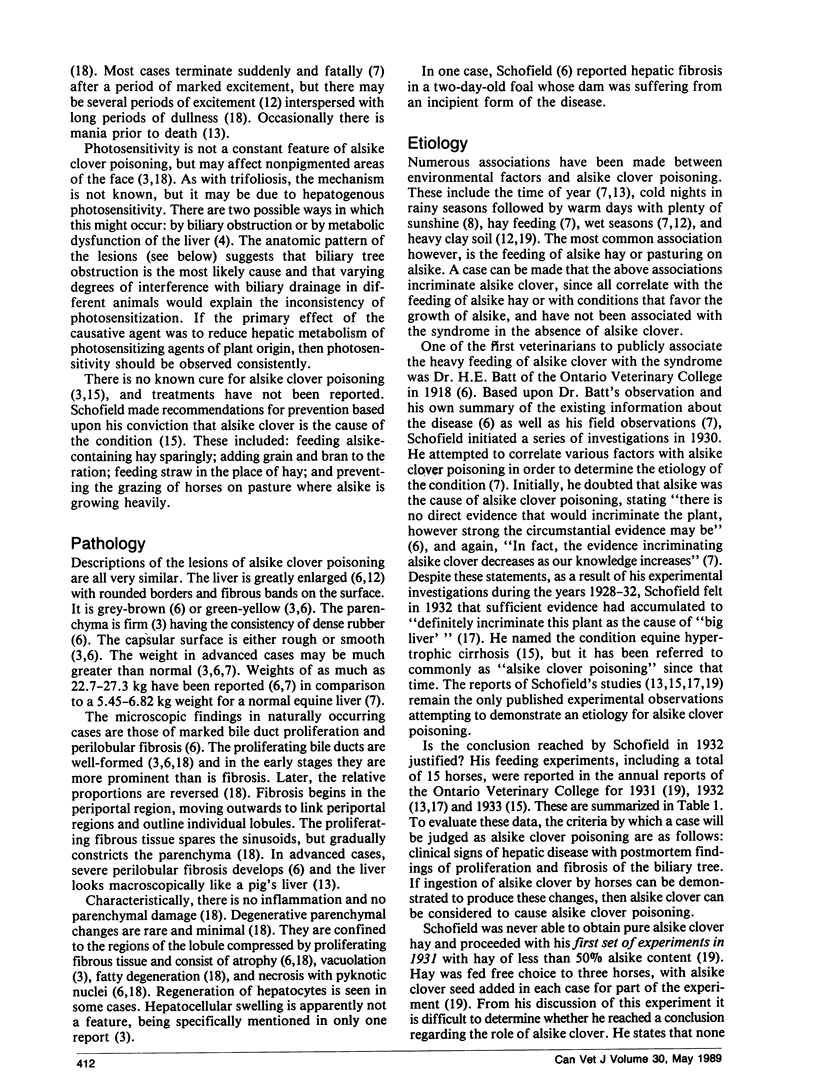
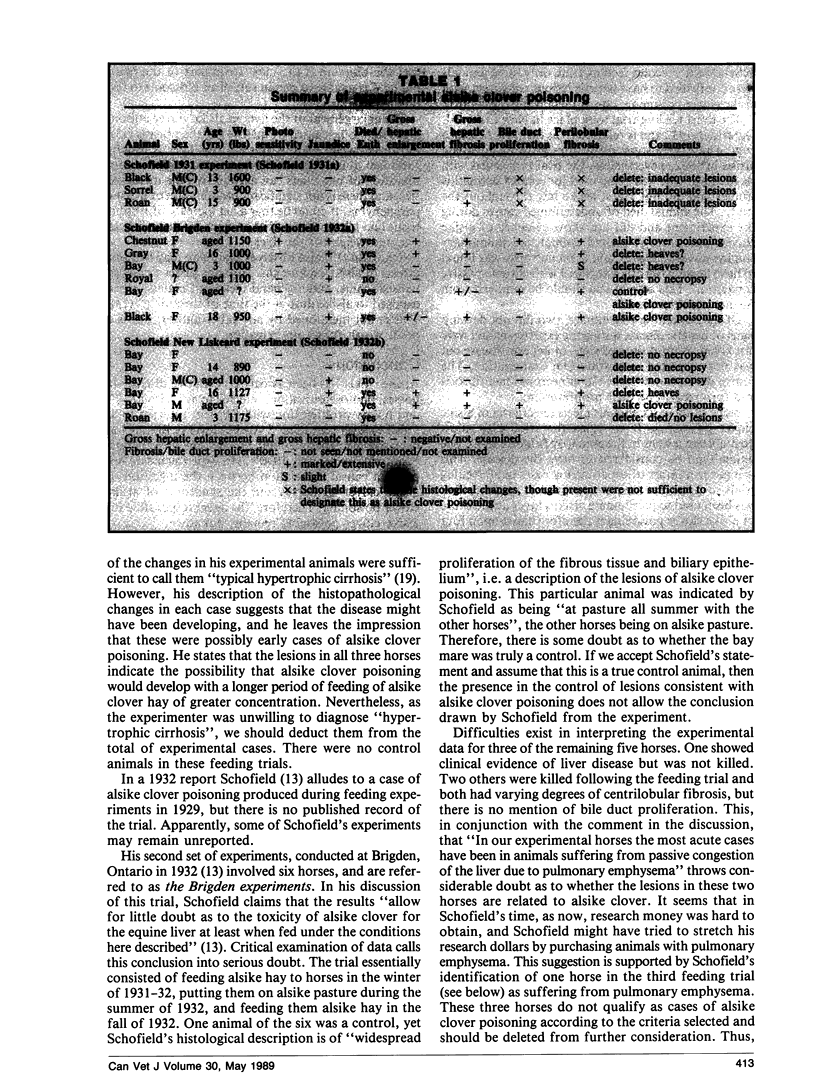
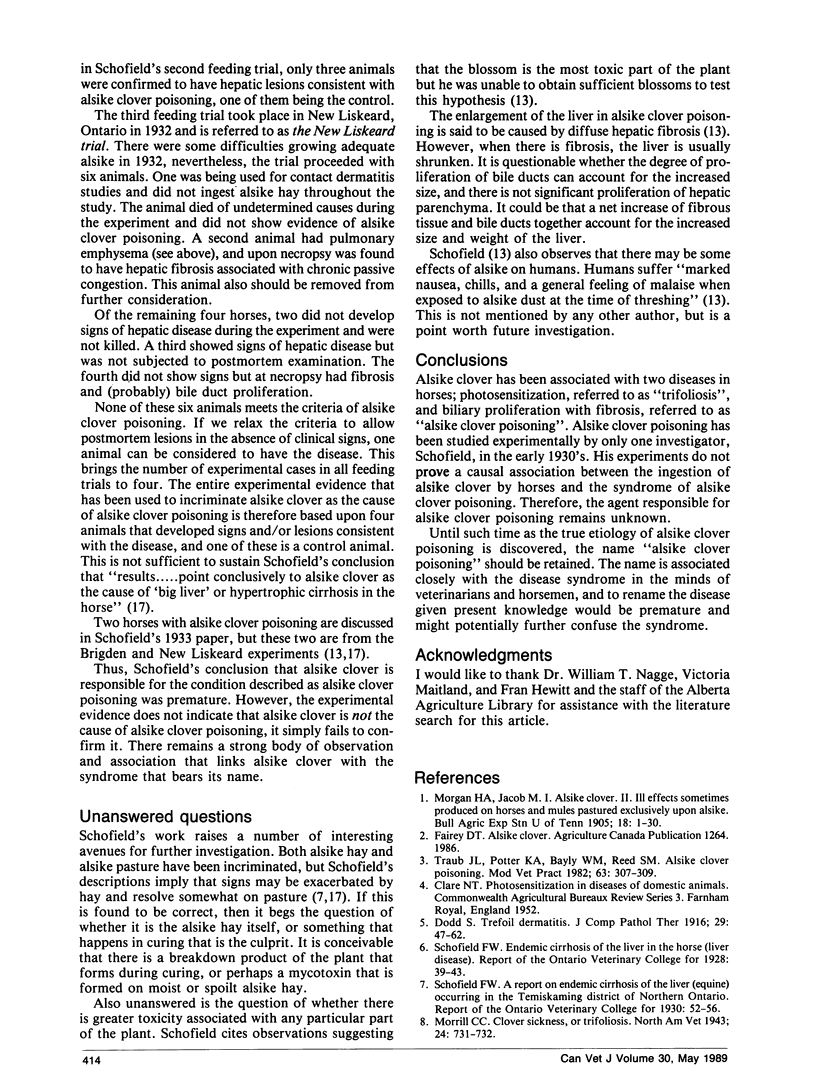
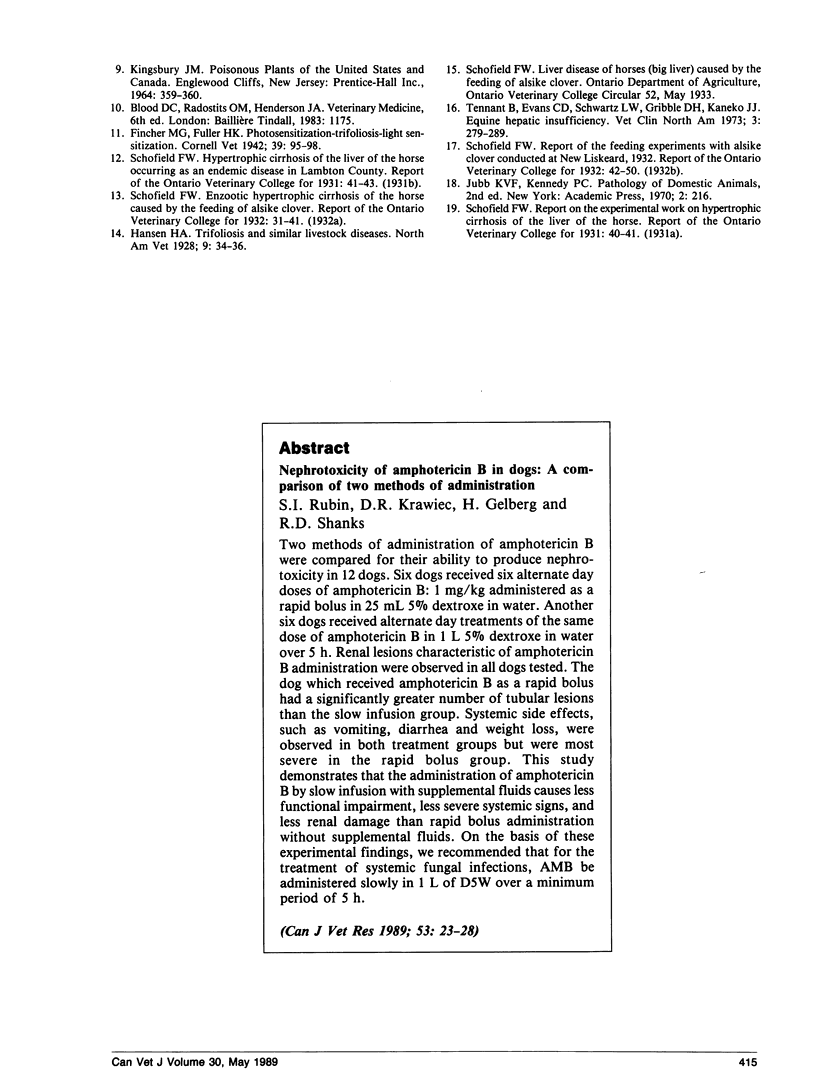
Selected References
These references are in PubMed. This may not be the complete list of references from this article.
- Tennant B., Evans C. D., Schwartz L. W., Gribble D. H., Kaneko J. J. Equine hepatic insufficiency. Vet Clin North Am. 1973 May;3(2):279–289. doi: 10.1016/s0091-0279(73)50037-6. [DOI] [PubMed] [Google Scholar]


